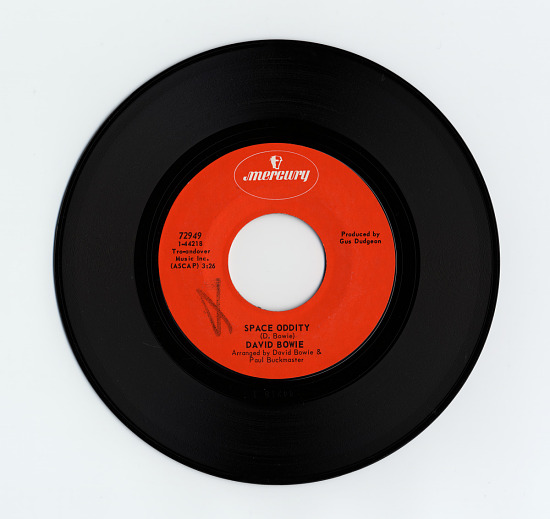From a Karaoke classic to a nostalgic tune about change that is still trending on social media to this day, Billy Joel’s discography has it all. Implementing a variety of instruments ranging from his own piano composition to accomplished jazz musician Freddie Hubbard’s trumpet solo, Billy Joel really is the definition of an entertainer.
Joel has countless hit songs; concert attendees describe it as “listening to hit after hit.” Before attending my 2nd Billy Joel concert in Cleveland, Ohio, I made a point to listen to all of his work just to make sure I was refreshed on exactly who I was seeing live. After spending weeks listening to each and every track of his, I realized how many overlooked and underplayed tracks he has on his albums that seem to be in the shadows of his chart-topping hits. After narrowing down my top choices of songs I rarely see being talked about, I compiled my top 5 overlooked songs of his.
#1 Miami 2017 (Seen the Lights Go Out on Broadway)– Turnstiles Album Billy Joel – Miami 2017 (Seen the Lights Go Out On Broadway)
This song originally appearing on Turnstiles also makes an appearance in “The Stranger Legacy Edition.” It most definitely has a very similar feel to his hit, “New York State of Mind,” found on the same album. It starts out with an instrumental melody, in this case, a piano, and then all of a sudden explodes into a more prominent sound, that shifts from the ballad intro to the Rock ‘n’ Roll vibrancy that really gives the song a contrasting energy. The lyrics of the song tell an entertaining story of his hometown, New York, crumbling before his eyes while everyone flees to Florida for retirement, hence the name “Miami 2017.” Not only is he speaking about his love for the city, but he is also speaking about the New York financial crisis of 1975. Joel often writes about his love for New York and implements New York references and culture in most of his music. Compared to the rest of the album, this song blends in perfectly; however, with a deeper dive into the meaning, the song is definitely one of the most opinionated and politically oriented.
#2 I’ve Loved These Days – “Turnstiles” Album
I’ve Loved These Days Billy Joel
This song on his fourth studio album has a nearly identical sound to the track recorded and released just a year later, “Scenes from an Italian Restaurant.” The song is very vocally heavy, with dramatic drum beats during the chorus. Like the majority of his work, it begins with a slow scene setting and eventually blooms into a complete telling of a story of a goodbye to younger years. Moving on,“gaining weight” and “sleeping far too long and late” are both examples he gives of the downfalls of adulthood. Joel describes how being in the spotlight at a younger age felt, with “silken robes” or “fine cocaine,” showing certain sides of the life of fame that may not be as lavish through the eyes of a celebrity. This is yet another example of Joel speaking his mind through his music, and another example of Joel’s often-stated views on living a more humble life rather than feeling entitled solely because of his career. It’s something that sets Joel apart from other Hollywood names.
#3 This Is The Time – “The Bridge” Album
This Is the Time Live at MSG
Released in 1986 on the album “The Bridge,” [title] compared to his later work has been said to have a more pop-like element to it. This song in particular has set itself aside as a prime example of Joel having a diverse sense of music genres. Features of this album that put it aside from the others are the use of an electric guitar solo with David Brown. Pairing with more heavy vocals where he belts and holds notes for longer than the majority of his other work. The change within the genre switch is dramatic compared to the album released just 3 years prior, “An Innocent Man.” The album, as well as some of his work that would come later, takes on more Jazz-like musical qualities. Not only do I think this song is one of the many overlooked, the album as a whole seems to be masked considering it was released right in between 2 albums full of smashing hits: “An Innocent Man” in 1983 and “Stormfront” in 1989.
#4 Falling of the Rain – “Cold Spring Harbor” Album
Falling of the Rain Live
One of the tracks on Joel’s first-ever studio album, Cold Spring Harbor, made its debut in 1971. The album is full of Joel’s original piano compositions featured in its tracks, including the hit song “She’s Got a Way.” Consisting of just 10 short songs, the entire album takes 29 minutes to listen to. The song is one of the most recognizable and symbolic, with a series of opening piano notes that sound just like the sound of falling rain. The song creates the vision of three different characters and is a prime example of Joel’s storytelling capabilities. The story follows the progression of three vastly different storylines, including the life of a starving artist, or a girl who wanders through the woods. The song mentions each of the characters’ specific interactions with the falling rain: how the man who paints loves what he does so much and “didn’t hear the falling of the rain” or the girl who walks through the woods and “was glad when the rain came falling on her face.” Joel creates an alternate universe through a single song, creating characters with personality and qualities within a song just over 2 minutes.
#5 “Keeping the Faith” – “An Innocent Man” Album
Keeping the Faith Live
Found on one of Joel’s most creative albums with many different components of unique sound, this song fits in perfectly. The song has a very 1960’s style opening beat with a reggae-inspired sound. Taking advantage of the jazzy sounds of the saxophone and the trombone on this track, [title] has components like an upbeat sing-song percussion to set it apart from being entirely reggae-inspired. Lyrically, the song describes Joel’s childhood growing up in New York in the early 60’s. Joel makes relevant references to pop culture of the time, including The Flagg brothers, fashion like Matador boots, or pastimes like the rise of drive-in movies. Joel talks about the time period as “the oldies” and “the good ole days.” At the end of the song, he mentions how he is “keeping the faith.” Though he is an adult, he keeps the memories of his adolescence close to him and reflects on them through his adulthood. This song follows his ever-lasting theme of change and reflection, a subject that is present in the majority of his hit songs.
Joel implements a variety of sound qualities into his music, taking from different genres and using sounds of different decades to create variety within his work. Nearly all of Joel’s songs take on a storytelling element, where he paints vivid pictures of certain settings that the songs progress through, creating an engaging plot. It’s made clear that he puts thought and opinion into the lyrics he writes, building a successful music career with over 100 songs recorded and released. With that many tracks come successful hits, songs that never took off, some that deserve to be recognized, and some that don’t.










